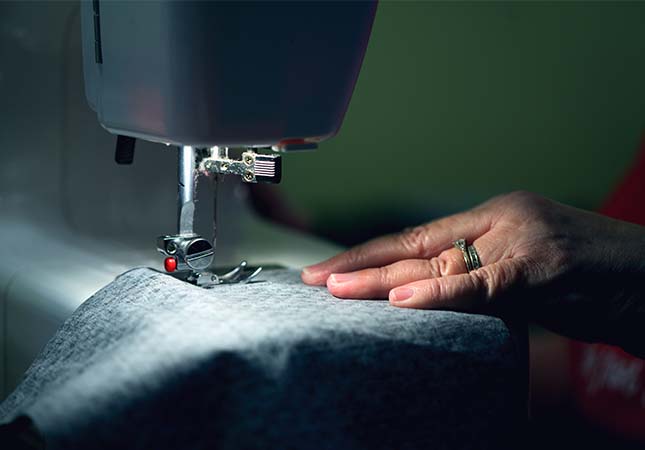What are Non-Woven Fabrics?
Nonwoven fabrics are fabrics that are not woven or knitted but instead are held together by bonding or interlocking on the nonwoven machinery such as non woven fabric slitting machine. Non-woven fabric slitting machine helps to produce high-quality nonwoven fabrics in required shapes, making nonwoven fabrics now become one of the main fabric types that be used in our daily life, especially at the beginning of the epidemic of the CONVID-19, nonwoven is used as the raw materials of some medical masks production.
The most common method of production is meltblown technology, which uses a high-speed airflow to melt the polymer and draw it out into very fine fibers. These fibers are then air laid onto a moving belt, where they bond together as they cool.
Other methods of production include wet-laid, spunbonded, and needle-punching. Nonwoven fabrics can be made from a variety of polymers, including polypropylene, polyethylene, nylon, and polyester. They can also be made from natural fibers such as cellulose and wool.
Nonwoven fabrics have many applications, including filtration, absorbency, reinforcement, padding, and gaskets. They are used in a variety of industries, including personal care, medical, automotive, and construction.
The Production Process of Nonwoven Fabrics
Nonwoven production begins with a web of material fed into a forming machine, subjected to high pressure and heat. This forms the web into a nonwoven fabric. The fabric is then cooled and passed through a series of rollers that add texture or other desired properties. Finally, the fabric is wound onto a spool or cut into yardage for use in products.

Uses of Nonwoven Fabrics
Nonwoven fabrics are versatile and have a variety of uses, from disposable personal hygiene products to heavy-duty industrial applications.
Disposable personal hygiene products such as diapers, feminine hygiene products, and wipes are made from nonwoven fabrics. These products must be absorbent, strong, soft and comfortable against the skin.
Industrial applications for nonwoven fabrics include insulation, filtration, and reinforcement. Nonwovens can be used as an insulating material in both hot and cold weather due to their porous nature, which allows them to trap air and resist heat transfer. They are often used as filter media in water filtration systems because of their high surface area-to-volume ratio and ability to capture small particles. Nonwovens can also be used to reinforce other materials; for example, they are often laminated to paper or textile substrates to add strength and durability.
Advantages and Disadvantages of Nonwoven Fabric
Nonwoven fabric is made from interlocking fibers that have many advantages such as being lightweight, absorbent, inexpensive to produce, easy to work with, strong, and durable, so that has wide applications in hygiene and chemical fields.
However, nonwoven fabrics always are hard to sew and can be easily torn, the mask production uses nonwoven as the raw material because of its high filtration but at the same time, lowered the breathability of a mask.
The related industry of nonwoven fabrics, such as nonwoven machinery, also greatly developed with the increasing applications and demand for nonwoven fabrics. 2 main factors influence the nonwoven machinery development.
Technological progress is the most important factor the nonwoven machinery development, which has led to continuous improvement in the performance of nonwoven machinery and increased market demand for these products. Economies of scale also play a role in making nonwoven machinery more affordable and thus more widely used. Government policies can influence the industry status of nonwoven machinery by providing tax incentives or other forms of support.
As a leading textile machinery enterprise, SUNTECH has a series of nonwoven fabric production lines, including spunbond nonwoven machines, and spunmelt meltblown spunlace non woven machines that can greatly promote the output of non-woven fabrics.




